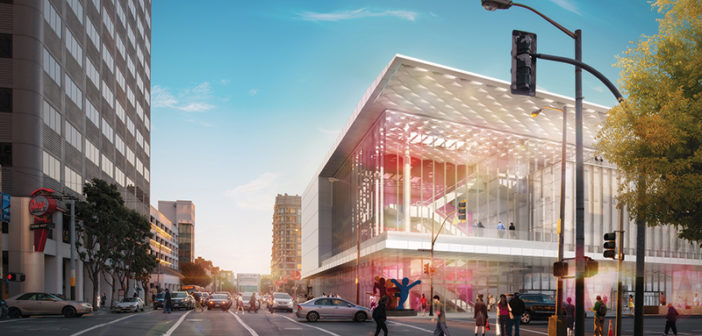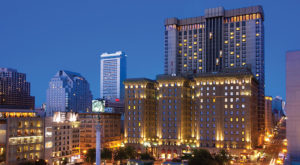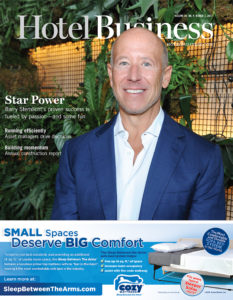SAN FRANCISCO—Despite ongoing renovations at the Moscone Center, many industry experts are projecting a positive outlook for the City by the Bay’s hotel market in 2017.
“San Francisco is a very strong market with very little new hotel supply coming into the market,” said Alan Reay, president of Atlas Hospitality Group. “There are extremely high barriers to entry, so there are very few owners willing to sell, which has caused a drop in sales. We do expect sales to pick up a little bit in this market, due to the fact that RevPAR increases are starting to flatten out and interest rates are starting to move up, which will impact net operating incomes and may make more owners motivated to sell.”
San Francisco had a 56% decrease in individual transactions in 2016—from 18 to 8, according to a year-end report on California hotel sales prepared by Atlas. Additionally, the total dollar volume went down 8%. The report found the average price per room in San Francisco County increased 15% in 2016, but the median price per room dropped 11%. “The median price decline is in large part due to the fact that a number of much more expensive, larger transactions occurred in 2015,” said Reay. According to the paper, published last month, California’s biggest and most expensive sale in 2016 was the 1,195-room The Westin St. Francis, which sold for more than $1 billion. It led San Francisco on a per-room basis at about $852,000.
As for how this year is already turning out, recently released data by STR revealed a 2% drop in occupancy year-over-year for the month of January. Comparing January of this year to last year, ADR jumped 9.4%; RevPAR increased by 7.2%; supply remained stagnant, dropping only 0.4%; demand fell by 2.4%; and revenue increased 6.7%.
“I do believe the city is still a very attractive market for people trying to build hotels,” said Chris Kraus, managing director at research firm CBRE Hotels. “It’s generally a very difficult market from an entitlement standpoint, and a very costly market to build in, which mitigates some of the supply increases.”
According to CBRE’s latest numbers for the San Francisco-San Mateo metro area, which will be available in the firm’s upcoming Hotel Horizons forecast, the San Francisco market in 2017 will see a hotel occupancy of 83.7%—a projected decrease of 0.7%. ADR is expected to remain fairly stable at $229.54—down only 0.6%. “The city of San Francisco continues to be a very desirable strategic gateway market within the country,” he said. “Along with New York and Miami, it’s still a very attractive market.”
Supply is expected to increase by 1.6%, with demand projected to show a slight growth of 0.9% by year-end. The market’s RevPAR is forecast to decrease by 1.3% to $192.06. “There are a few things happening this year that are contributing to the softening in RevPAR growth, and I think RevPAR growth in San Francisco will probably be somewhere between flat and probably down 1% or 2% in 2017,” Kraus said, acknowledging the market’s performance will begin to eventually taper off.
“We are seeing a few more projects get approved, but hardly enough new rooms to have a big impact on existing hotel revenues. The big issue in the city seems to be the work ongoing at the convention center, which is impacting the hotel market in terms of future business. This may create downward pressure on ADR and occupancies in the short term,” Reay noted while analyzing the market’s future for 2017.
With renovation slated for completion at some point in 2018, the Moscone Center will also impact the market’s performance. “For 2017, we are currently forecasting 681,600 attendees at Moscone events,” said Laurie Armstrong, director of media relations at San Francisco Travel. “This is a decrease of 211,724—or 24%—below our average attendees. However, the total number of visitors to San Francisco—including attendees at Moscone events, attendees at self-contained meetings and all other visitors—is projected to be flat at 25.9 million.”
“Surprise, what goes up must come down,” said Robert D. Kline, CEO & co-founder of The Chartres Lodging Group LLC, a hotel investment and hospitality asset management company. “The closure of Moscone, and the major construction project underway, is keeping many meetings at bay. Other cities are capitalizing on this and San Francisco is going to feel the effect. RevPAR is expected to decline in 2017 and into 2018.”
Jan D. Freitag, SVP of lodging insights at STR, also noted the significance of the convention center’s expansion efforts in the market in 2017. “With the closing of the Moscone Center, demand will be quite muted (up 0.4%) and the supply growth will continue to show healthy growth (up 0.9%),” he said. “We expect the U.S. supply growth to show a 2% increase, so the San Francisco supply growth number is still comparatively small.” STR expects RevPAR to increase slightly by 1.2% in 2017, which will be driven by an ADR increase of 1.7% but hampered by a decline in occupancy.
Another factor to consider when analyzing the market this year in comparison to last year is that last year the NFL held Super Bowl 50 at Levi’s Stadium, which is located in Santa Clara, CA. The annual event had a “significant positive impact on the San Francisco market” in 2016, Kraus noted.
Despite any concerns, San Francisco—at least for now—will remain at the top of the list for hoteliers interested in markets on the West Coast. “Supply growth is relatively benign, but the lack of a strong demand catalyst will mean that occupancies decline this year,” Freitag noted. “That said, the absolute level of occupancy is still expected to be quite high (more than 83%) compared to the total U.S. number of just more than 65%.” HB



